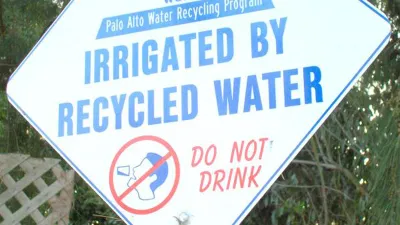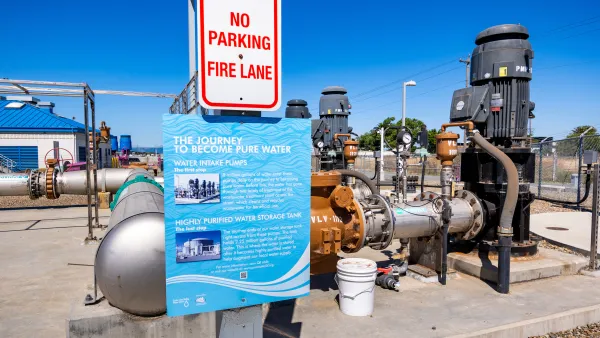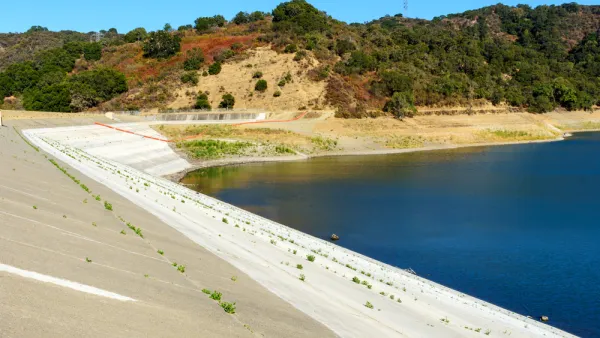San Francisco's water district has become the first in the nation to require newly constructed large buildings to collect and reuse nonpotable water.

First, the city approved in 2012 a program that permits developers to construct systems for collecting onsite nonpotable water and reuse it for nonpotable purposes, such as toilets and irrigation. "This voluntary program has been a tremendous success, with over 30 projects in the city either in design, construction or operation to date," according to Laura Tam, sustainable development policy director at SPUR, an early supporter of the program.
Then, in 2013 the city expanded the program to provide permits and grants for networks of buildings to share and redistribute nonpotable water. "We think that sharing and recycling water resources across property lines may have the best economies of scale for water treatment and the highest potential to offset potable water use," writes Tam.
This past summer, the San Francisco Public Utilities Commission (SFPUC) took this innovation a step further, becoming the first water utility to require all new construction over 250,000 square feet to use available graywater and rainwater sources for its nonpotable needs. Further, the grant program has been expanded to include existing buildings and networks of buildings and redefined eligibility in terms of a building's water use rather than building size.
SPUR is optimistic about the potential impact of these programs and has awarded the SFPUC its Good Government Award. Tam cautions that while Californians may see more rain this year, drought conditions can be expected to persist well into the future, and innovation is essential to sustainability. Other large water districts will benefit from the example set in the Bay Area.
"While we all need to keep saving water — and will need to even once it starts raining again — San Francisco can be proud of how local innovation and public support for water resilience is catalyzing private investment in sustainable infrastructure. Expanding building and district-scale water re-use could transform urban water demand — and especially its growth trajectory — for the Bay Area and beyond."
FULL STORY: SF’s Latest Tool to Save More Water: Pay Building Owners to Recycle It

National Parks Layoffs Will Cause Communities to Lose Billions
Thousands of essential park workers were laid off this week, just before the busy spring break season.

Retro-silient?: America’s First “Eco-burb,” The Woodlands Turns 50
A master-planned community north of Houston offers lessons on green infrastructure and resilient design, but falls short of its founder’s lofty affordability and walkability goals.

Delivering for America Plan Will Downgrade Mail Service in at Least 49.5 Percent of Zip Codes
Republican and Democrat lawmakers criticize the plan for its disproportionate negative impact on rural communities.

Test News Post 1
This is a summary

Test News Headline 46
Test for the image on the front page.

Balancing Bombs and Butterflies: How the National Guard Protects a Rare Species
The National Guard at Fort Indiantown Gap uses GIS technology and land management strategies to balance military training with conservation efforts, ensuring the survival of the rare eastern regal fritillary butterfly.
Urban Design for Planners 1: Software Tools
This six-course series explores essential urban design concepts using open source software and equips planners with the tools they need to participate fully in the urban design process.
Planning for Universal Design
Learn the tools for implementing Universal Design in planning regulations.
EMC Planning Group, Inc.
Planetizen
Planetizen
Mpact (formerly Rail~Volution)
Great Falls Development Authority, Inc.
HUDs Office of Policy Development and Research
NYU Wagner Graduate School of Public Service




























